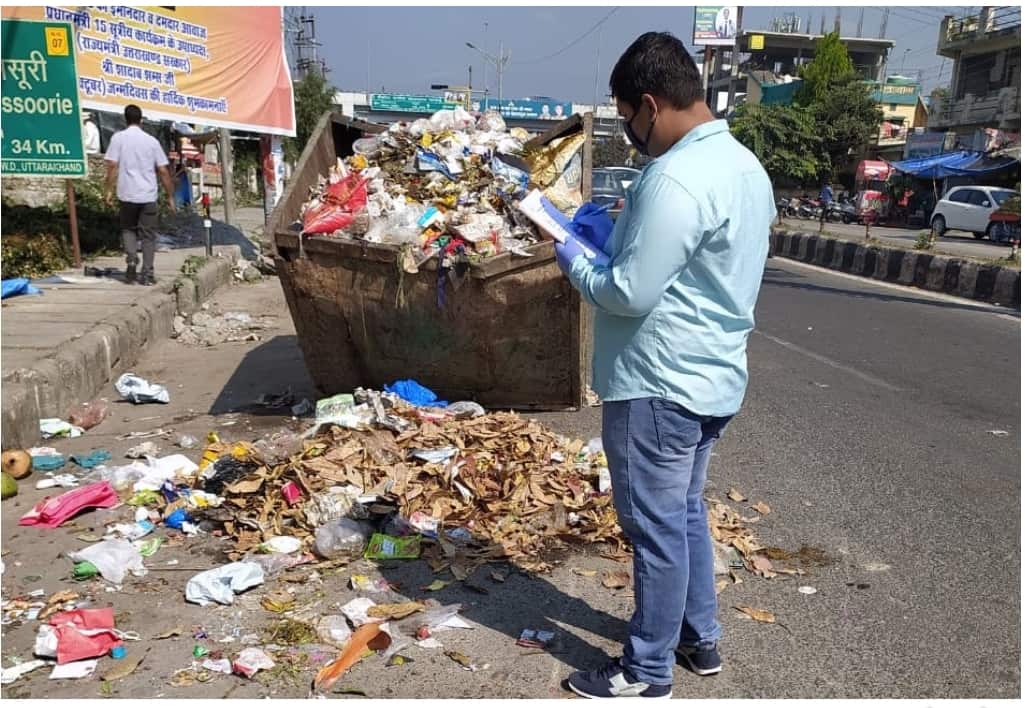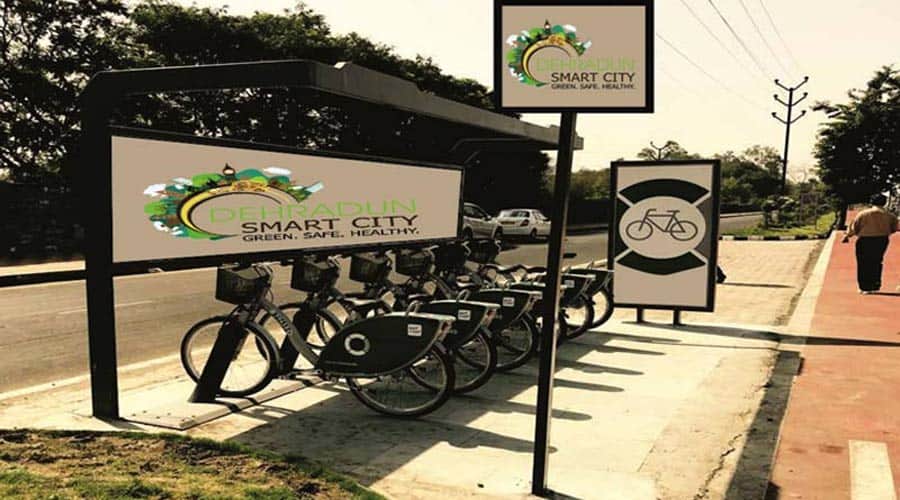As Uttarakhand gets set to elect a new state government, we bring you the first of a two-part series on the state’s urban development challenges and possible solutions
Uttarakhand faces a major challenge to develop its cities and towns. In the coming years, urban pressures will increase manifold due to the upcoming Delhi-Dehradun economic corridor, the Char Dham all-weather road and other central projects. To prepare its cities and towns to face these challenges, political parties need to have manifestos and visions that include relevant and sustainable components of urbanization.
Uttarakhand is one of the fastest urbanizing states in India. Based on the 2011 census, the state’s urban population is 200% more than the urban population of Himachal Pradesh and 37% more than that of Uttar Pradesh. And its mountain terrain and the continuing challenge of unabated migration makes the issue of urbanization complex and challenging.
Cities like Dehradun, Hardwar, Roorkee, Haldwani, Kashipur, Rudrapur and relatively smaller ones like Rishikesh and Kotdwar have witnessed rapid growth beyond their capacities. The rapidly changing scenario requires political parties and people’s representatives to move forward with the holistic goal of sustainable urban development.
It is clear that the lack of a sustainable urban development plan is a burning problem for the state. Political parties and elected public representatives need to grasp the speed with which urbanization is taking place and need to prepare themselves for the emerging city-based challenges.
It is precisely this lack of awareness and comprehension that prevents sustainable urban development from becoming an important part of the agenda of any political party.
Read more: Char Dham highway project will only add to urban woes
Points to ponder on
While many strategic and operational actions need to be taken to chart out an urban agenda, here are 10 agenda points that can offer support. The inputs from these 10 points can help the state identify gaps, tap potential opportunities and increase efficiency in local governance.
1. A nodal authority
To take the example of Dehradun, improved coordination amongst various agencies like the Mussoorie Dehradun Development Authority (MDDA), Dehradun Smart City Limited (DSCL), Education and Health Departments, Nagar Nigam, Pollution Control Board, Planning Department, RTO, Police, Jal Nigam and Jal Sansthan, Disaster Management and all other relevant departments is crucial.
In fact, one of these departments or institutions can be made the nodal authority for Dehradun. Multiplicity of agencies is clearly hampering the city’s overall progress. Dehradun could learn from its city peers across the country and make appropriate changes to advance the urban development trajectory.
The experience and learnings from Dehradun can be adopted and adapted in the state’s other towns. There needs to be a practice of experience sharing and best practices emulation across the cities, which currently don’t speak to each other.
2. Focus on the environment
There is a need for institutional coordination and management to ensure holistic planning, implementation and monitoring of climate actions. Specialised committees such as Biodiversity Management Committees, City Climate Cells and Environmental Committees can be established to focus on rejuvenating and safeguarding biodiversity and environment.
In order to adopt rejuvenation and conservation of water bodies and open spaces, enhance biodiversity and drive disaster resilience, local and state level strategies can be aligned with national plans like the National and State Action Plans for Climate Change (NAPCC and SAPCC), National Clean Air Plan (NCAP), National and State Biodiversity Guidelines (Biological Diversity Act, 2002) and the State/District Disaster Management Plans.

3. Cleaner cities
Waste management and cleanliness remains a major challenge. Efforts to work on sanitation have been patchy and require consistency. Waste segregation is still not taking place in many towns and mixed waste is being collected by urban local bodies, which lack adequate manpower and resources to handle the ever increasing volumes of waste and the tonnes of legacy waste lying around. Open dumpsites with gorging animals are a common sight. The situation is grimmer in rural areas and tourist spots that have no localised waste management systems.
Read more: Opinion: The Himalayas are not just for tourism, sustainable or not
It is clear that sanitation has not been a key priority for the state. Keeping in mind the ecosystem of the mountain state, it is imperative for it to invest and create robust and streamlined solid waste management systems and processes.
It is important to note here that environment friendliness, cost effectiveness and acceptability from the local community are major factors which impact efficient solid waste management. Going ahead, Uttarakhand must recognize that waste is a resource and the state’s ULBs need to do their best to reuse, recycle and upcycle waste.
4. Efficient handling of waste streams
It is important to have a robust construction and debris (C&D) waste management system. This includes maintaining inventories of construction activities, notifying dumping points, expanding storage facilities for C&D waste, establishing a collection mechanism, enforcing user charges and penalty for non-compliance etc.
Nagar Nigams can do this on their own or in association with the private sector. Similar efforts need to be undertaken for e-waste management.
City authorities across Uttarakhand should promote source segregation of dry and wet waste through various incentive based awareness programs and rigorous campaigning to achieve 100% recycling and reuse of waste. Citizens can be encouraged to adopt home or neighbourhood composting.
5. Renewable energy
City authorities should try to leverage government schemes and initiatives like the Rooftop Solar programme, Solar Net Metering and Grid Connected Wind-Solar Hybrid Power Projects for adopting renewable energy at the city level. Green building practices should be encouraged by adopting National Building Codes 2016 or Energy Conservation Building Code 2017 or Eco Niwas Samhita 2018 in the building rules, bye-laws and development control regulations.
6. Resource management
Cities in Uttarakhand should prepare a water demand management plan for efficient utilization of water resources keeping in mind current and projected demand. This can provide direction for measures to rejuvenate water resources and replenishing groundwater.
The administration should identify vulnerable hotspots and adopt relevant structural and non-structural strategies to reduce the impact of water stagnation. This includes measures like preparing a storm-water management plan to channel excess water efficiently and establishing SOPs for water logging prevention.
7. An integrated approach to mobility
In order to improve public transport, parking and traffic, it is extremely critical to understand their linkages. The three issues cannot be looked at in isolation. Thus, it is important to have an integrated approach involving all government departments like transport, roadways, urban development, police and others.
Similarly, political parties, academic institutions, citizen groups, elected representatives, vyapar mandals, transport bodies and media should be involved and engaged as key stakeholders in drawing up any plans, especially for parking and traffic management.
There is a need for a comprehensive, multimodal mobility plan for Dehradun and the other cities in Uttarakhand. Options like metro, air taxis, ropeway, light rail and personal rapid transport have been explored. Yet, the city of Dehradun has not moved beyond creaking city buses and a fleet of errant autos, and e-rickshaws.
8. Green commute
There should be a greater push towards green transport like CNG-based autos and electric vehicles. Pollution checks need to be enforced strictly. Capital-intensive projects like Metro are financially unviable for low-load cities like Dehradun, Haridwar and Rishikesh.
Read More: Ill-planned, ill-executed PPP projects behind Uttarakhand’s crumbling health services
The scenic Dehradun valley and other such areas have sensitive ecologies. City authorities should focus on public bicycle sharing and promote non-motorized transport (NMT) infrastructure. It should aim to increase cycle lanes and footpaths to over 35%, especially in high traffic clusters and high-use networks through dedicated planning and budget allocation.

9. Air pollution data
Cities should install continuous air quality monitoring sensors and make the dynamic data available to the public through display boards and public applications like SAFAR/SAMEER. The sensors should be calibrated in consultation with the central and state pollution control boards to ensure the quality of data captured.
10. Awareness and capacity-building
There is a clear lack of conceptual clarity regarding urbanisation amongst the vast majority of Uttarakhand’s political class. Urban transformation is possible only with an educated, aware and sensitized league of enlightened elected representatives.
Capacity building needs to start with the 70 MLAs and 92 mayors/chairpersons of ULBs. It is only through education, awareness and capacity building that lawmakers will be better equipped to understand and act on the numerous urban challenges that confront the rapidly urbanising state.
Capacity building must focus on developing the knowledge and ability of elected representatives to be able to see the whole rather than only parts of the challenge. They need to move beyond the traditional focus areas of roads, drains and potholes. Utilising budgets for piecemeal initiatives needs to be discouraged. They need to be educated to involve the citizenry in decision making by promoting the concept of ward committees and devolving more resources and power to ULBs.
In summary, the structure and system of Uttarakhand’s municipal administration is wholly inadequate to deal with today’s challenges of urbanisation. It is archaic, having been fashioned for a different age and time.
It is hoped that the newly-elected state government will look deeply, seriously and systemically at the complex urban issues the state faces and will chart out a sustainable urban agenda for Uttarakhand.